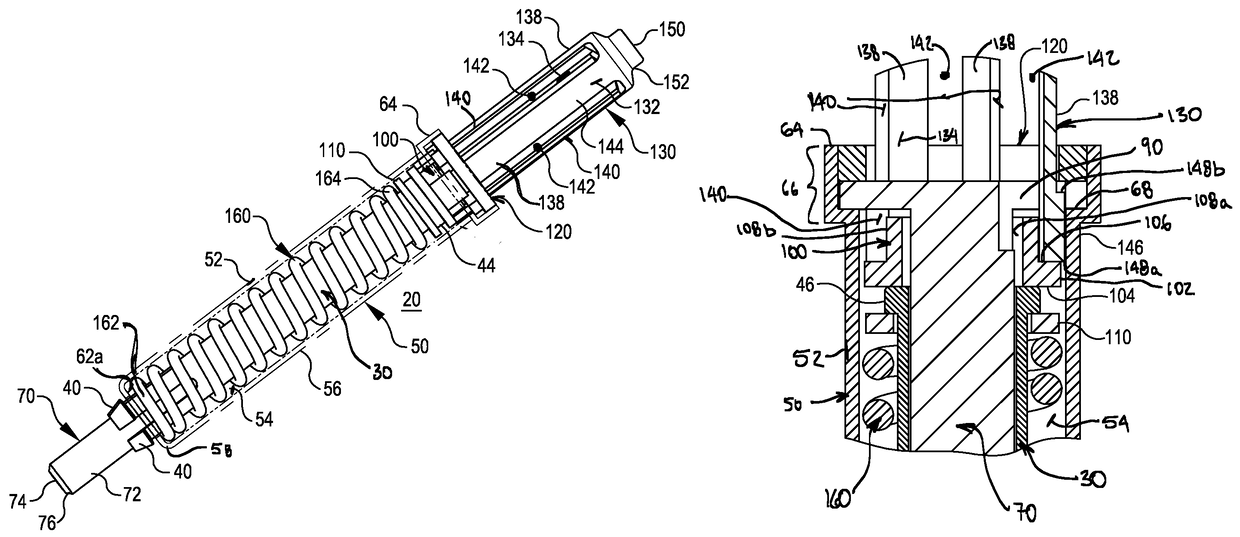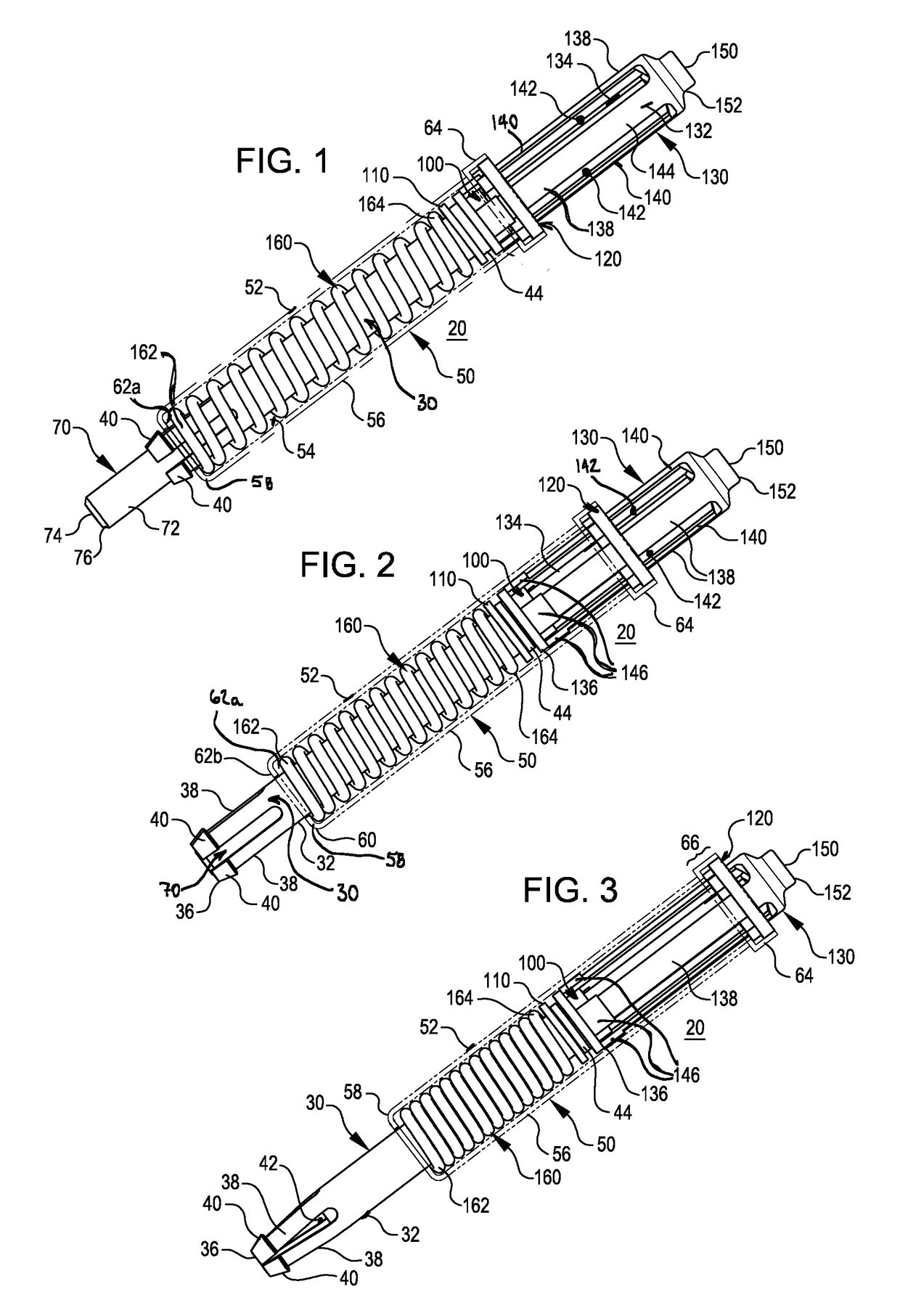Biased blind side temporary fasteners, systems and methods
a temporary fastener and blind side technology, applied in the field of biased blind side temporary fasteners, systems and methods, can solve the problems of not being subject to very little restraint, fasteners are more likely to react negatively to the rotation of work pieces, and fail to address lateral play issues, so as to prevent unintended egress of the plunger finger distal end, prevent the egress of the plunger finger, and engage the collet body better
- Summary
- Abstract
- Description
- Claims
- Application Information
AI Technical Summary
Benefits of technology
Problems solved by technology
Method used
Image
Examples
Embodiment Construction
[0039]Preface: The terminal end of any numeric lead line in the several drawings, when associated with any structure or process, reference or landmark described in this section, is intended to representatively identify and associate such structure or process, reference or landmark with respect to the written description of such object or process. It is not intended, nor should be inferred, to delimit or define per se boundaries of the referenced object or process, unless specifically stated as such or facially clear from the drawings and the context in which the term(s) is / are used. Unless specifically stated as such or facially clear from the several drawings and the context in which the term(s) is / are used, all words and visual aids should be given their common commercial and / or scientific meaning consistent with the context of the disclosure herein.
[0040]With the foregoing in mind, the following description is presented to enable a person skilled in the art to make and use the cl...
PUM
 Login to View More
Login to View More Abstract
Description
Claims
Application Information
 Login to View More
Login to View More - R&D
- Intellectual Property
- Life Sciences
- Materials
- Tech Scout
- Unparalleled Data Quality
- Higher Quality Content
- 60% Fewer Hallucinations
Browse by: Latest US Patents, China's latest patents, Technical Efficacy Thesaurus, Application Domain, Technology Topic, Popular Technical Reports.
© 2025 PatSnap. All rights reserved.Legal|Privacy policy|Modern Slavery Act Transparency Statement|Sitemap|About US| Contact US: help@patsnap.com



